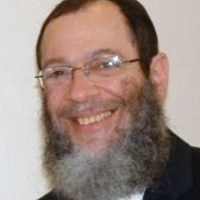Sticks and stones may break my bones / But words will never hurt me.
That's a lie. Okay, it's not completely false, it's a half-truth. Sticks and stones can break bones. But words can hurt, too; very painfully.
We've come a long way in protecting our children from the sticks and stones of the playground. As a child, when I lost my balance and fell off the end of the sliding pond, I landed on concrete. When my grandchildren tumble off the slide, they land on something more akin to rubber.
So we've made sliding ponds safer.
Have you even seen a see-saw lately?
According to an article about them, "One problem with the seesaw's design is that if a child allows himself/herself to hit the ground suddenly after jumping, or exits the seesaw at the bottom, the other child may fall and be injured. For this reason, seesaws are often mounted above a soft surface such as foam or wood chips." Really? Not when I was a child. We had concrete underneath us. We would attempt to catapult the other kid off by landing as hard we could. We thought that was fun. And it was! But it was dangerous, and it is a good thing that we have learned how to cushion our children from these physical dangers.
Cushioning your children against emotional danger is important, too. We can learn how to do that from how Kevlar?® is made and what to expect from it.
Kevlar?® is one of the materials used in the manufacture of bulletproof vests. It is both the way that Kevlar?® is made and the use of many layers of fiber that enable the vest to protect the wearer from small-caliber handgun and shotgun projectiles, and small fragments from explosives.
Bulletproof vests do not render their wearers impervious to bullets. The vest can prevent bullet penetration, but the wearer still absorbs some of the bullet's energy. Even without penetration, bullets contain enough energy to cause blunt force trauma at the point of impact. There is some pain and bruising, but the blow is sufficiently cushioned to assure survival without permanent damage.
What is the material that cushions a child from verbal projectiles? It's called self-esteem, and it also requires layers. How do you weave a vest of self-esteem? You esteem your child. Yes, it's a transitive verb. You wrap them in layers of effective protective material. The operative words are "effective" and "layers."
Kevlar?® is an effective material, and it still requires layers. Many layers of fluff do not a bullet-proof vest make. One layer of Kevlar?® doesn't protect anyone, either. Similarly, the vest of self-esteem you weave for your child requires your knowing what is effective material, and what is fluff.
I'll give you some examples of each.
Mendy was assigned to draw a sketch of the Heichal, showing the Shulchan, the Menorah, and the Mizbach Hazahav, with at least one kohen in his bigdei kahuna. He used colored pencils on an 8.5 by 11 inch sheet of copy paper. The colors he chose bore no resemblance to the actual colors of the kalim and the bigadim. The Menorah he drew has tiny yet accurately placed kaftor v'ferach designs, and the Shulchan shows some detail. The stick figure kohen's begadim are, to put it generously, nondescript.
If you were to say to Mendy, "Good job," you would be handing him fluff. It's only effective when it's specific. "Good job" is accurate but too vague.
If you were to say to Mendy, "Wow, what an artist you are, that's amazing," you, again, would be handing him fluff. It's only effective when it's real. This is worse than "good job." This is simply untrue, and he knows it. Don't risk losing credibility.
What would be an effective esteeming of Mendy for his art work? A specific, accurate statement of what he did well. Such as: You made a really detailed Menorah and Shulchan even though you had to work with such a small paper, Mendy! It must have been hard to get all of those balls and flowers onto the branches. And I see you drew the pans for each of the loaves. You did those really well!
Every time you esteem your child with a specific and accurate statement of what he has done well you provide him with the effective raw material of self-esteem. Your child's self-esteem doesn't come from your child's self. Your child weaves a vest of self-esteem out of the material you provide. The quality of that material, and the number of layers you provide, become your child's cushion against the verbal blows he will sustain.
You don't want him to deflect the things you say to him that he finds unpleasant? I agree. I don't want him to be impervious to criticism and correction. But remember: cushions don't deflect. They absorb some of the force and make the impact tolerable. When you criticize your child, I'm sure it is to help him grow, not to crush him. Your child can comfortably grow from your corrections when you've helped him stand tall with your authentic praise.
There's one more comparison I'd like to draw between the properties of Kevlar?® and the cushioning effect of healthy self-esteem. Bullet proof vests offer little protection against blows from sharp implements, such as knives and arrows. The impact of these objects can puncture the fiber layers of most bullet-resistant fabrics. Sharp words also cut deep, penetrating and destroying layers of self-esteem carefully built.
Words of acknowledgement, support, and encouragement are powerful tools for planting and building your child's self-esteem. Words can hurt, too; very painfully. Chachamim, hizharu b'divraichem. Use your words carefully.
Rabbi Yitzchak Shmuel Ackerman is a Licensed Mental Health Counselor with specialties in marriage, relationships, and parenting. He works with parents and educators, and conducts parenting seminars for shuls and organizations. He can be reached at 718-344-6575.

 Previous
Previous

